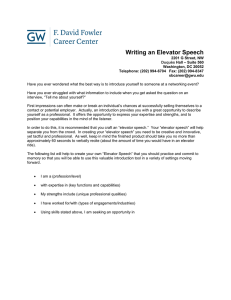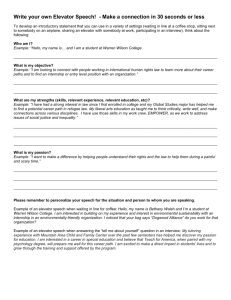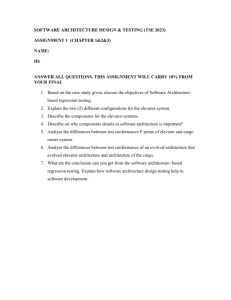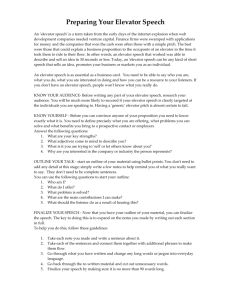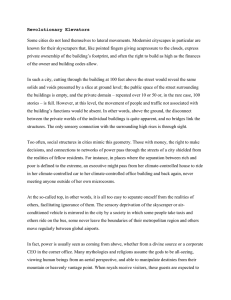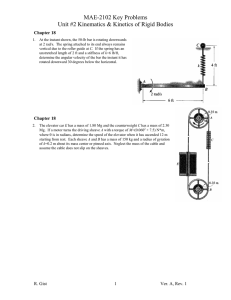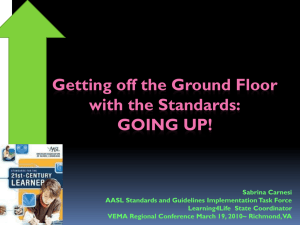Business Plan
advertisement
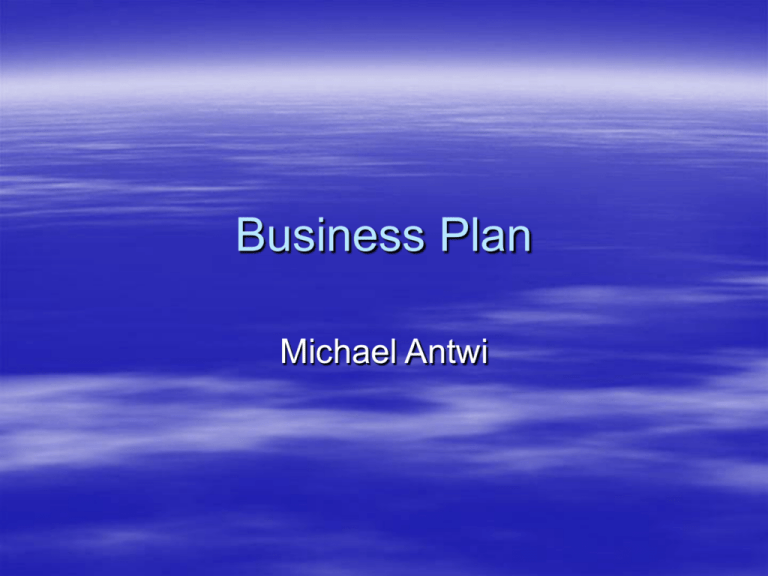
Business Plan Michael Antwi Four Factors Critical to the Success of Every New Venture: (The Framework) The people; – Prior Experience – Connections The opportunity; – Market siz The context; – Industry structure Risk and reward; – Assessment of everything that can go wrong or right – Clear logical mitigation plan Generic Outline of a Business Plan Executive summary; General company description; Product and Services; Marketing Plan; Operational plan; Management and organization; Financial statements; and Appendix. General Company Description Mission statement; – A brief statement usually in thirty words or fewer Company goals and objectives; – Where you want the company to be – Progress markers along the way to goal achievement Business philosophy; – – – – What is important to you in business To whom will you market your product Brief industry description Discuss most important strengths and core competence Legal form of ownership; – Sole proprietorship, partnership, corporation or limited liability Products and Services In depth description of your product and services; – Factors that will give you competitive advantages and disadvantages – Pricing, fee, or leasing structures of your products or services Marketing Plan Economic facts about your industry; – – – – – – Total market size Market demand Market trends Market growth potential Barriers to entry Environmental factors affecting the market Products and, or services; – Thorough product description from customers’ perspective Marketing Plan Promotion; – Advertising: form of media Promotional budget; – Startup? (numbers normally goes into budget) – Ongoing? (numbers normally goes into operating plan budget) Pricing; – Brief explanation of pricing strategy Distribution channels; – How do you intend to sell your products or services Operational Plan Production; – How and where your products or services will be produced or delivered Location; – Type of location – example, physical requirements, access to ports, freeways and proximity to suppliers and customers Legal Environment; – Address any environmental concerns - example, licensing requirements and trademarks or any copyrights or patents issues Personnel; Operational Plan Inventory; Suppliers; Credit policies; – Managing account recievables and payables Management and Organization Questions and issues to discuss; – Who will manage the business – What experience does the person bring to the business – Is there a plan for continuation of the business if this person is lost or incapacitated – Professional and advisory support Financial Statements Start-up expenses and capitalization; Start-up expenses and capitalization; – – – – – 12-month profit and loss statement 4-year profit and loss statement Cash-flow projection Projected balance sheet Break-even analysis Appendixes Executive Summary Best practice is to limit to two pages; – Include everything you would cover in a fiveminute interview – Make it enthusiastic, professional, complete, and concise “Elevator Speech” What is an “elevator speech”? – Short description of what you do, or point you want to make, presented in the time it takes an elevator to go from the top to the first floor or vice versa Where and when to use an “elevator speech”? – – – – An event Conference Convention Meetings with networking opportunities Suggested Ingredients to Effective “Elevator Speech” Determine your niche market; The needs of your niche market; The services you’ll provide to solve the needs of the market; What makes you unique; and A short story to illustrate a successful outcome that you have produced. Key Lessons Having a great product does not ensure survival; Competition will be there faster than you think—must correctly have the good management team; – “Invest in the jockey, not the horse” Long-term strategy must drive short-term decision making.

